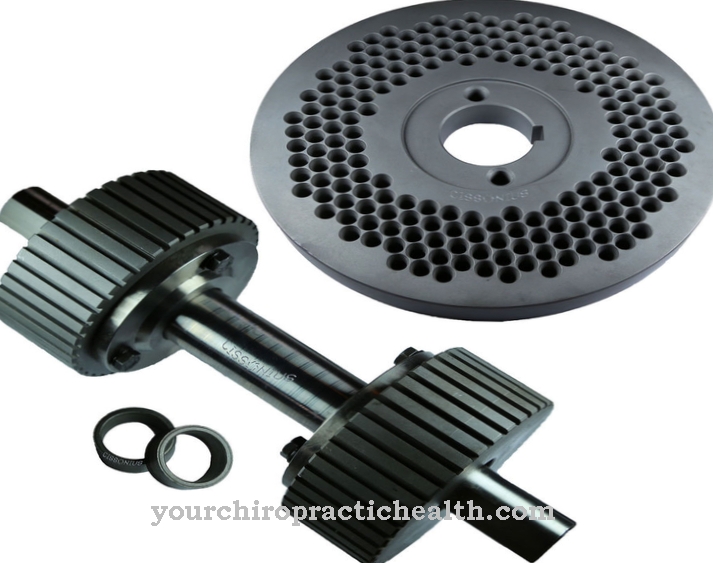gold also plays a role in the medical treatment of patients. The history of gold in medicine stretches from the distant past to the present day. Aurum metallicum, as the Latin name for the precious metal is, is one of the oldest medicines in human history. In dentistry, metal also plays a crucial role as a tooth replacement.
What is gold

Aurum metallicum means "metal of light". Gold is often seen as the queen of metals, because few other parts of the earth's crust have fascinated people as much as gold. The precious metal is one of the heaviest and rarest elements. However, metallic gold can also be found in the tiniest traces in our everyday food.
Today there are liqueurs containing gold such as “Danziger Goldwasser”, pralines and dishes by star chefs that are decorated with gold leaf. This is supposed to adorn the creations with a touch of luxury. But with the liqueur “Danziger Goldwasser” in particular, the centuries-old idea of promoting health by consuming the gold leaf also plays a role. Hundreds of years ago, rich people with STDs had shavings filed off from gold coins and sprinkled them over their food in hopes of better health.
Shapes, types & types
To this day, science does not know very much about the actual spectrum of effects of gold molecules in our organism. But already Pliny the Elder (23 to 79 AD) describes in detail which diseases should be treated with the shiny yellow metal. At first only metallic gold was used as a medicine.
In Arabia, Abu Musa Jabir developed a process in the 12th century in which he could produce a solution from the golden metal. This solution was christened “aqua regia” - the “royal water”, which found its way into medicine. The metallic gold is dissolved in a mixture of hydrochloric and nitric acid.The resulting gold salts in aqua regia can be used much better by the organism than the pure metal. However, due to its aggressive effects, it was only used very diluted as a medicine.
Structure & functionality
Paracelsus studied the healing properties of gold. Homeopathy, which has established itself as a new medical system, and spagyric, which developed from ancient alchemy, still use the precious metal as a starting product for the complex manufacture of their medicines.
At the end of the 19th century Robert Koch researched the therapeutic effects of gold compounds. From then on, university medicine systematically used gold for the treatment of venereal diseases and tuberculosis. Gold medicines have also been developed for patients with rheumatic inflammation of the joints. Gold particles are still used in various preparations in conventional medicine, homeopathy and natural healing methods.
Another interesting mention in medical literature comes from the 15th century. Giovanni d'Arcoli wrote about the fact that holes in the teeth are lined with gold leaf. From these first attempts to repair diseased teeth, modern dental prosthetics have developed to this day. Precisely fitting dental fillings and stable crowns are made from the particularly compatible gold.
Medicines containing gold, which are prescribed by conventional medicine, require intensive monitoring of the patient by the doctor. Although they achieve the therapeutically desired effect in many cases, gold therapy causes numerous side effects that can cause changes in the blood count, skin and mucous membrane defects and liver damage. It is different with homeopathic and spagyric gold medicines. Due to the special types of preparations, no undesirable changes to organs and tissue structures are to be expected.
Why gold and its salts can have a therapeutic effect in the body at all has not yet been comprehensively researched. Studies have found that the gold compounds in drugs can inhibit the release of pro-inflammatory proteins in the case of underlying rheumatic diseases. This can at least slow down the progression of chronic rheumatoid arthritis.
Homeopathic and spagyric gold medicines are used to try not only to alleviate the symptoms of the disease. According to the current state of knowledge, rheumatic diseases are autoimmune diseases. The aim of the alternative treatment approaches is to achieve a fundamental change in the patient's body so that the immune system is no longer directed against the body's own cells.
You can find your medication here
➔ Toothache medicationMedical & health benefits
Because of its resistance to corrosion and the extremely rare allergic reactions to the precious metal, gold is an ideal raw material for the manufacture of dentures and fillings. Despite the development of ceramic materials for dental prosthetics, many patients still choose gold when it comes to an inlay or a tooth crown. Pure gold would be too soft for the daily stress of chewing. That is why gold alloys are used in dentistry. Silver, platinum or copper are added to the precious metal in order to achieve the desired properties.
Medicines containing gold are rarely used in rheumatic arthritis because of the extensive side effects and the development of other therapeutic agents in conventional medicine. In homeopathy and spagyric, therapists prescribe preparations made of gold to lighten the mood in depressive states, to strengthen after a long illness, for functional heart problems, for diseases of the rheumatic type and other autoimmune diseases.



























